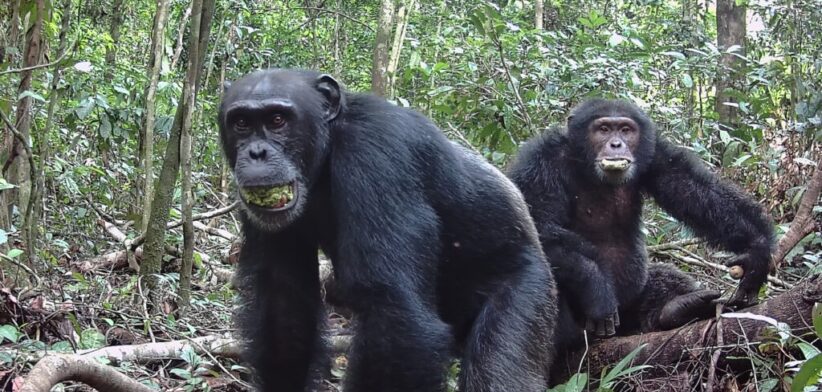It’s always cocktail hour for our primate cousins, with new research showing chimpanzees consume the equivalent at least two standard alcoholic drinks every day.
University of California, Berkeley, researcher Aleksey Maro said the study had, for the first time, measured the ethanol content of fruits available to chimpanzees in their native African habitat.
“Across all sites, male and female chimpanzees are consuming about 14 grams of pure ethanol per day in their diet, which is the equivalent to one standard American drink,” Mr Maro said.
“When you adjust for body mass, because chimps weigh about 40 kilos versus a typical human at 70 kilos, it goes up to nearly two drinks.”
UC Berkeley Professor Robert Dudley said it wasn’t clear whether chimpanzees actively sought out fruit with high ethanol levels, which were typically riper fruit with more sugars to ferment.
“But the availability of ethanol in many species of fruit that they normally eat suggests that alcohol is a regular part of their diet and likely was a part of the diets of our human ancestors,” Professor Dudley.
He said in the study the 21 species of fruit sampled at two chimp study sites in Uganda and Ivory Coast had an average alcohol content of 0.26 percent by weight.
“Primatologists who have studied chimps at these sites estimate that the animals consume about 10 pounds (4.5 kilograms) of fruit per day, on average, and that fruit makes up about three-quarters of their diet.”
Professor Dudley said researchers also had recorded for each site the approximate proportion of each fruit species in the chimp diet.
“The chimps are eating five to 10 percent of their body weight a day in ripe fruit, so even low concentrations yield a high daily total — a substantial dosage of alcohol.
“If the chimps are randomly sampling ripe fruit, then that’s going to be their average consumption rate, independent of any preference for ethanol.
“But if they are preferring riper and/or more sugar-rich fruits, then this is a conservative lower limit for the likely rate of ethanol ingestion.”
Mr Maro said fruit consumption occurred throughout the day and the chimps showed no overt signs of intoxication.
He said to get “a buzz on”, a chimp would have to eat so much fruit its stomach would bloat, but chronic low-level exposure suggested that the common ancestors of humans and chimps (our closest living relative among the apes) were also exposed daily to alcohol from fermenting fruit, a nutrient that was missing from the diets of captive chimps and many humans today.
“Chimpanzees consume a similar amount of alcohol to what we might if we ate fermented food daily.
“Human attraction to alcohol probably arose from this dietary heritage of our common ancestry with chimpanzees.”
Read the full study: Ethanol ingestion via frugivory in wild chimpanzees.








